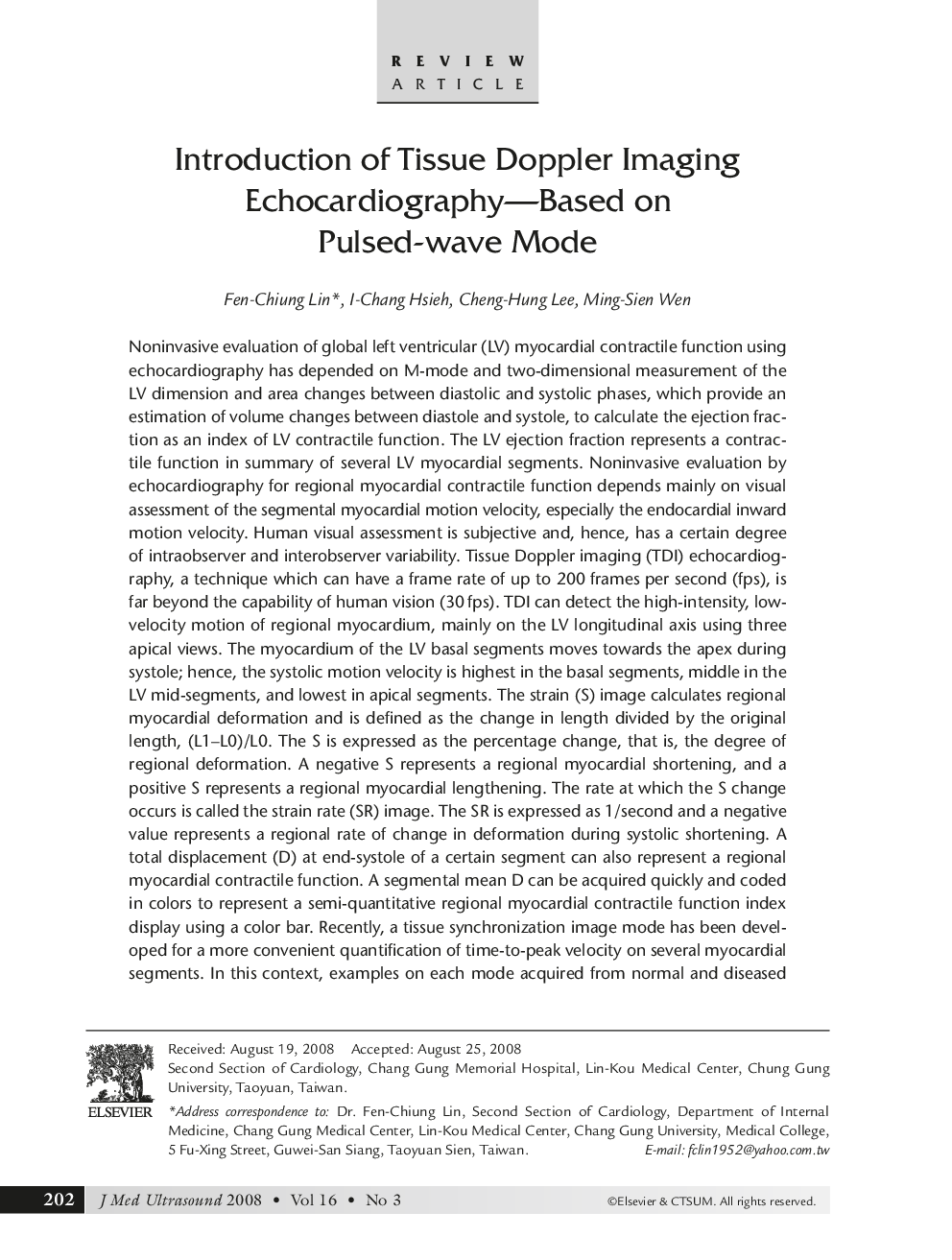| Article ID | Journal | Published Year | Pages | File Type |
|---|---|---|---|---|
| 4233374 | Journal of Medical Ultrasound | 2008 | 8 Pages |
Noninvasive evaluation of global left ventricular (LV) myocardial contractile function using echocardiography has depended on M-mode and two-dimensional measurement of the LV dimension and area changes between diastolic and systolic phases, which provide an estimation of volume changes between diastole and systole, to calculate the ejection fraction as an index of LV contractile function. The LV ejection fraction represents a contractile function in summary of several LV myocardial segments. Noninvasive evaluation by echocardiography for regional myocardial contractile function depends mainly on visual assessment of the segmental myocardial motion velocity, especially the endocardial inward motion velocity. Human visual assessment is subjective and, hence, has a certain degree of intraobserver and interobserver variability. Tissue Doppler imaging (TDI) echocardiography, a technique which can have a frame rate of up to 200 frames per second (fps), is far beyond the capability of human vision (30 fps). TDI can detect the high-intensity, low- velocity motion of regional myocardium, mainly on the LV longitudinal axis using three apical views. The myocardium of the LV basal segments moves towards the apex during systole; hence, the systolic motion velocity is highest in the basal segments, middle in the LV mid-segments, and lowest in apical segments. The strain (S) image calculates regional myocardial deformation and is defined as the change in length divided by the original length, (L1–L0)/L0. The S is expressed as the percentage change, that is, the degree of regional deformation. A negative S represents a regional myocardial shortening, and a positive S represents a regional myocardial lengthening. The rate at which the S change occurs is called the strain rate (SR) image. The SR is expressed as 1/second and a negative value represents a regional rate of change in deformation during systolic shortening. A total displacement (D) at end-systole of a certain segment can also represent a regional myocardial contractile function. A segmental mean D can be acquired quickly and coded in colors to represent a semi-quantitative regional myocardial contractile function index display using a color bar. Recently, a tissue synchronization image mode has been developed for a more convenient quantification of time-to-peak velocity on several myocardial segments. In this context, examples on each mode acquired from normal and diseased regional myocardium will be shown. Thus, TDI will hopefully be more easily and widely accepted by echocardiographers and in clinical applications.
